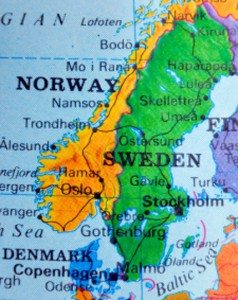Researched by: Ian Stevenson, MD and Francis Story
From: Cases of the Reincarnation Type, Volume II: Ten Cases in Sri Lanka, by Ian Stevenson, MD
Article by: Walter Semkiw, MD
A Christian Boy’s Short Life in Sri Lanka
Palitha Senewiratne was born in 1952 and lived in Nittambuwa, a town 22 miles or 35 kilometers northeast of Colombo. Colombo is the capital of Sri Lanka with a population of about 650,000 people. Sri Lanka is an island country off the west coast of India. (1)
Palitha’s father was named Lionel and his mother Vinnis. Palitha was very close to his mother, who enjoyed sewing. He had a more distant relationship with his father. One activity that Palitha and his father did enjoy doing together was planting in the garden. Palitha had a brother named Nimal, who was 4 years younger than Palitha. The two boys fought frequently and once Nimal even bit Palitha. Despite this animosity, when a dog bit Nimal, Palitha was so angry at the canine that he wanted to kill it. Palitha also had a brother named Ranjith. (2)
Uncle Charlie has Electricity and Car; Palitha’s Toy Elephant
Charles Senewiratne was the great uncle of Lionel Senewirante, Palitha’s father, who lived next door to Palitha’s family. Charles was financially successful and enjoyed many luxuries for the time including electricity in his home and the possession of an automobile. Charles’s son had a motorcycle. (3)
Palitha was fascinated by elephants, which are found in Sri Lanka. Ian Stevenson pointed out that elephants have to live by rivers or streams, as they need to bath themselves. Palitha had a toy elephant, which he would bath in a well on the family’s property. (4)
Palitha Attends a Christian School and has a Death Premonition
The Senewiratne family was Christian and Palitha went to a Christian elementary school, which was part of St. Mary’s College. Though Buddhism has been the predominant religion in Sri Lanka for over 2000 years, the Portuguese, Dutch and English colonized the island country and with their rule, they brought Christianity to the Sri Lanka. Currently, about 7 percent of country’s population is Christian, 70 percent are Buddhists, 13 percent are Hindu and 10 percent Muslim.
St. Mary’s College is located in a town called Veyangoda, which is 4.3 miles or 7 kilometers from Nittambuwe. During the school year, Palitha stayed in a boarding house near the school. In July 1960, Palitha came home from school on vacation. Though he had no known medical problems, he seemed irritable and unwell. Though his usual practice was to place his schoolbag, which contained books and his toy elephant, in a cupboard or cabinet, this time he abandoned the schoolbag on a chair and stated: ” I shall not be going to school again.” (5)
Ian Stevenson noted that with this statement, Palitha seemed to have a premonition that he would die soon. This phenomenon was also observed in the Reincarnation Case of Hanan Monsour | Suzanne Ghanem. (6)
After returning from school, Palitha soon developed a serious illness marked by vomiting. He was taken to the hospital and passed away within just a few days of the beginning of his illness. Palitha died on July 28, 1960, at eight years of age. (7)
Palitha is Reincarnated into a Buddhist Family as Gamini Jayasena
A little over two years after Pakutha died, Gamini Jayasena was born in a section of Colombo named Nugegoda on November 13, 1962. His father was G. Jayasena and his mother’s name was P. K. Nadawathie. He was the first child of family and was called “baby.” This nickname stuck and the family continued to use “baby” to refer to Gamini. (8)
When he was about 18 months old, he started talking about a previous life. Gamini stated that he had another mother whom he considered his ”real mother.” Gamini said that his past life mother was much bigger than his present mother. This was true as P.K. Nadawathie was a small woman, in contrast to Palitha’s mother. (9)
When he saw his mother using a sewing machine, Gamini said, “There is machine like that at our house.” As mentioned, Vinnis, Palitha’s mother, did have a sewing machine. (10)
Gamini said that there was someone named Nimal, who Gamini said had bitten him. Gamini also stated that Nimal had been bitten by a dog, which was true. Ian Stevenson said that Nimal himself confirmed this event to him and even showed Stevenson the scar from the dog bite. Gamini also said that Nimal was gored by a cow, which later was confirmed when the family met Vinnis, the mother of Palitha and Nimal. (11)
Gamini said that in his past lifetime, he had a schoolbag that was still on the chair at his past life home. In this bag, he said, he kept books and a toy elephant, which he would bath in a well. Ian Stevenson noted that Gamini often made statements as if he was still living the life of Palitha. (12)
Past Life Memories: Gamini Knows about Electric Lights, Switches and Olive Trees, Even though None Exist at his Parent’s Home
The Jayasena family was relatively poor and their modest home did not have electricity. As such, the family was surprised when Gamini, as a toddler, indicated to his parents that electric light could be turned on by a switch, a phenomenon he had never observed or been taught. In addition to the luxury of electricity, Gamini said that his clothes were better at his past life home. (13)
Gamini stated that at his prior home, there was a “Charlie Uncle” who had an automobile and that Charlie Uncle’s family had a red motorcycle, which was true regarding Charles Senewiratne, the great uncle of Palitha’s father. Gamini said that Charlie Uncle would drive him to school in the car. Recall the Charles Senewirtne’s home had electricity. As such, Gamini’s knowledge about electric lights and light switches represents a past life memory. (14)
Gamini also said that at his prior home, his father would break branches from an olive tree and give the branches to him. Gamini’a mother was surprised to hear Gamini use the term “olive,” as the family never used this word as there were no olive trees in the vicinity of their house. (15)
According to his father, Gamini was always talking of his previous home between 2 and 3 years of age. He noted that when Gamini got angry, he wanted to retreat to his prior home. This behavior, of threatening to return to a past life home when upset, was also observed in Reincarnation Cases of Burmese Twins. (16)
Past Life Behaviors: Gamini Prays like a Christian, Covets a Cross and Celebrates Christmas
The Jayasena family, who were Buddhists, was quite surprised to observe Gamini praying in the posture typical of a Christian, kneeling with body erect. This is in contrast to how Buddhists and the Jayasena famly prayed, kneeling but with the buttocks on the heels in a sitting position. (17)
When Gamini found a wooden cross he brought it home and asked his mother to hang it on the wall. The family also noticed that Gamini resisted going to Buddhist temples and he would not bow to Buddhist monks, which was considered rude behavior for a Buddhist child. (18)
Another unusual behavior for a Buddhist is that Gamini liked to celebrate Christmas. He would talk about Santa Claus an expected to receive gifts at Christmas time. (19)
Due to these behaviors, the Jayasena family suspected Gamini had a past lifetime as a Christian.
Gamini recognizes his Past Life Village and finds his Past Life Home
In April 1965, when he was two and a half years of age, his family took a bus trip and when they came to the town of Nittambuwa, Gamini said this was the location of his previous home. (20)
The family was close to Baddegama Wimalawansa, who was a cousin of Gamini’s mother, a Buddhist monk and a well known principal of a school in Colombo. The Jayasena family shared Gamini’s statements regarding an apparent past lifetime with the Venerable (the way Buddhist monks are addressed) Wimalawansa, who decided to research the case. (21)
On May 2, 1965, Ven. Wimalawansa took Gamini, along with his mother, to Nittambuwa in an attempt to research the possible past lifetime that Gamini was referring to. As the car neared the town, they drove past a narrow street or lane. Gamini pointed at the lane and the car was halted. Gamini walked back to the lane and stated, “This is the way to my house.” He then walked down the lane and approached a house, which nobody in the party had been to before. Gamini then said, “That is my house.” He also stated, “My ‘mummy’ lives there.” This indeed was the home of the Senewiratne family and the place where Palitha had lived. (22)
Xenoglossy: Gamini uses Past Life Terms in Referring to his Past Life Parents
Gamini then went up to the gate of the house and said, “Daddy is not there.” The group was surprised to hear Gamini use the words “mummy” and “daddy,” as these terms were not used in their family. Instead they used the Sri Lankan terms for father, “tatha,” and “amma” for mother.
The terms “daddy” and “mummy” were used in Sri Lanka by Christian colonists from England and Gamini’s knowledge of these terms represent past life recollections from Palitha’s schooling at St. Mary’s College. Indeed, Gamini’s parents had never even heard the terms “daddy” and “mummy” until Gamini started using them spontaneously. (23)
Past Life Memories: Gamini finds Charlie Uncle’s Farm
Gamini made a second recognition while on the lane. When walking down the lane towards the Senewiratne family’s home, Gamini found another small road that branched from the lane. Gamini made a left turn onto this small road and walked down it to a farm. He then returned and stated, “Charlie Uncle is not there.” The home of Charles Senewiratne, the great uncle of Lionel Senewirante, Palitha’s father, was indeed at the end of this small road. Ian Stevenson speculated that Gamini surmised that Charles was not home as his automobile was not parked in front of the house. (24)
Christianity & Reincarnation: Christians in Sri Lanka are Especially Closed Minded
At this time, the group did not attempt to introduce themselves to the occupants of the house that Gamini identified as his past life home. Ven. Wimalawansa was reluctant to introduce themselves to the residents of the house as it was assumed that the past life family were Christians, and they did not know how a Christian family would react to being told that their deceased family member, Palitha, had reincarnated as Gamini, who belonged to a Buddhist family. (25)
Ian Stevenson noted that Christians in Sri Lanka were especially resistant to the idea of reincarnation, in contrast to Christians in other countries who are more open, which he attributed to the Sri Lankan Christians being a minority in a country of Buddhists and Hindus who believe in reincarnation. (26)
Past Life Attachments: Gamini’s Family Decides Not to Contact Occupants of Gamini’s Past Life Home, which makes Gamini Weep
In addition, there was some confusion as to whether Gamini had been referring to having had a toy elephant or a real elephant in the past incarnation. Since the property that Gamini indicated was his past life home was not situated by a body of water, which is needed for live elephants, Ven. Wimalawansa was unsure whether this was the correct past life location. Due to this and the Christian issue, Ven. Wimalawansa thought it would be better to first make inquiries about the family living in the house that Gamini indicated was his past life home, rather than just barging in. As such, the party returned to Colombo. (27)
Gamini was very distraught that he was not allowed to go into his past life home and he cried continuously for 10 days after the visit. He kept saying that he wanted to go to his previous mother’s house and kept asking for the school bag that he left at the house. In an attempt to appease him, Gamini’s parents bought him a new school bag, but Gamini said he that did not want the new one, rather, he wanted the one he had before. (28)
Reincarnation Case Investigation: The Senewiratne Family Seeks Out the Reincarnation of Palitha
Unknown to them, villagers of Nittambuwa recognized the Buddhist monk and school principal, Ven. Wimalawansa, and related to other villagers that this distinguished party was researching a reincarnation case and that they were interested in the family living in the house at the end of the lane that Gamini had brought them to. These villagers told the occupants of this house, the Senewiratne family, of the Buddhist monk and his party’s interest in their home. (29)
Subsequently, Lionel and Vinnis Senewiratne traveled to Colombo and called on Ven. Wimalawansa at the school where he was the principal. They explained that their son, Palitha, had died a few years before. They asked to see Gamini, but were told they could not do so at that time. They gave a photo of Palitha to Ven. Wimalawansa, who forwarded the image to the Jayasena family. When Gamini saw the photo of Palitha, he said, “That’s my baby.” Since he was called “baby” by the family, they assumed that Gamini was referring to himself. (30)
Gamini is Brought to his Past Life Home & Family and Recognizes his Past Life Mother & Siblings
On May 2, 1965, when he was less than 3 years old, Gamini was brought back to Nittambuwa by Ven. Wimalawansa and taken to the house that Gamini said was his past life home. The Senewiratne family and a large crowd of neighbors gathered in front of the house. Ven. Wimalawansa suggested that Gamini give a gift of sweets, which was brought by the party, to his past life mother. Though Ian Stevenson noted that Gamini may have received clues from glances that neighbors may have made, Gamimi did place the sweets at the feet of Vinnis Senewiratne, Palitha’s mother. (31)
Vinnis then asked Gamini to identify Palitha’s brothers, Nimal and Ranjith, out of the crowd. Gamini correctly pointed them out. (32)
Past Life Memories: Gamini Notes Changes in his Past Life Home and Finds the Toy Elephant Bathing Well and the Olive Tree He Climbed
Gamini then observed that the roof of the Senewiratne home was not “shiny” before. Indeed, when Palitha was alive, a thatched roof covered the house. After he died, a corrugated iron roof was installed, which made it shiny. (33)
Gamini also found the well in which he, as Palitha, bathed his toy elephant. He did so by crossing a weeded area on the property. Vinnis explained that when Palitha was alive, a path led to the well, but after his death, the path was abandoned. Gamini also pointed to rice paddy fields in the town and said, “Those paddy fields are ours.” These fields did indeed belong to the Senewiratne family. (34)
When in the Senewirtne home, Ven. Wimalawansa showed a photo of Palitha to Gamini and inquired, “Do you know how this is?” Gamini replied, “It is myself.” (35)
While inside the Senewiratne home, Gamini stated, “There used to be an olive tree.” When asked to point it out, Gamini, went out on his and walked behind the house, where he found the olive tree. He said that he used to climb this tree. Palitha did indeed climb this olive tree. Recall that Gamini had previously told his parents that his past life father had broken off olive branches and given them to him, and that Gamini’s parents were surprised that he used the word olive, as they never used the term as there were no olive trees in the area that they lived in. (36)
Past Life Memories: At St. Mary’s College, Gamini finds his Past Life School Bench, Church Pew & Boarding Home & Identifies his Favorite Past Life Sweet
After visiting Nittambuwa on May 2, 1965, Gamimi was taken to St Mary’s College, where Palitha went to school. Once there, Gamini spontaneously found the classroom where Palitha was taught and ran to a bench and sat on it. Palitha’s teacher verified that this was the very bench that Palitha sat on. In the church at the school, Gamini recognized the pew that he used to sit on during his lifetime as Palitha. (37)
When taken near the boarding house where Palitha lived during the school year, Gamini found the boarding house unaided and when he found that the front door was locked, he ran around to the back of the house. Not finding anyone, he ran back to their group and stated, “Sister is not there.” This statement may mean that Gamini was expecting to find a Christian nun. Ian Stevenson was impressed at Gamini’s bold eagerness to enter a house that he had never been to in his current lifetime. Recall that Gamini was less than 3 years old at this time. (38)
At the boarding house, as at the Senewiratne home, Gamini stated that there used to be an olive tree on the property. Later, it was learned that this was true and that the olive tree had been cut down after Palitha’s death. (39)
On the way back from the boarding house to the group’s car, Gamini also recognized a candy shop where Palitha had bought sweets. At this shop, Gamini identified Palitha’s favorite sweet, a chocolate called sinibola, out of 5 different chocolate bars on display. Vinnis, Palitha’s mother, confirmed that this was Palitha’s favorite sweet. (40)
Reincarnation & Behavioral Similarities between Palitha and Gamini
Ian Stevenson reported that many similarities in personality and behavior existed between Palitha and Gamini. Both Palitha and Gamini were fascinated with elephants, liked to plant in the garden, liked poultry curry but disliked beef and both were very active, energetic boys. There were also similarities in dress. Most boys in Sri Lanka wore their shirts outside of their pants, but Palitha and Gamini preferred to tuck their shirts inside their pants. Ian Stevenson noted that at St. Mary’s College, boys were expected to have their shirts tucked in, which likely is the place where Palitha and Gamini acquired this habit. (41)
In addition, Gamini’s reactions to Senewiratne family members were consistent with how Palitha felt about these individuals. For example, Palitha was very close to his mother, but distant to his father. Similarly, when Gamini was taken to the Senewiratne home, Gamini was affectionate to Vinnis and appeared to be very happy to be with her. In contrast, Gamini cried when Palitha’s father tried to take his hand and resisted efforts to be brought closer to him. Ian Stevenson also noted that Gamini was aloof with Nimal. Gamini explained that he was still mad at Nimal for biting him. (42)
Christians Accept Reincarnation: Palitha’s Christian Relatives & Schoolteachers believe that Gamini is the Reincarnation of Palitha
Ian Stevenson considered this one of the most extensively researched reincarnation cases, in terms of interview hours, of all the cases he had studied. He also reported that the Senewiratne and Jayasena families had no prior acquaintance or mutual friends. (43)
Though they were Christians, both Palitha’s father and Charles Senewiratne (Charlie Uncle) came to believe that Gamini is the reincarnation of Palitha. Palitha’s father stated:
“As Christians we are not supposed to believe this nonsense, but he [Gamini] has recognized all of us and I think he is definitely our son reborn.” (44)
Reincarnation as the Work of the Devil: A Challenge to Religious Doctrine
Two teachers at St. Mary’s College were also convinced of the validity of the case, but were afraid to say so openly for fear of being censured by a priest at St. Mary’s who said, regarding this reincarnation case, “It was the work of the devil.” (45)
Ian Stevenson noted that this case is challenging as it pits evidence versus religious doctrine. (46)
Religion, Reincarnation, Christianity and the Past life Story of James Huston, Jr. | James Leininger
Another case in which Christian beliefs were challenged by evidence of reincarnation involves James Leininger, a young boy who had spontaneous nightmares and memories of being a US World War II fighter pilot whose plane was shot down. Bruce Leininger, James’s father, became the primary investigator of this reincarnation case. As Bruce methodically validated his son’s specific past life memories through research, he had to reconcile his evangelical Christian belief system with the growing evidence of reincarnation that he was compiling. To learn more, go to: James Huston, Jr. | James Leininger Reincarnation Case
When Chastised, Gamini Threatened to Retreat to his Past Life Home
Visits between the families persisted at least through 1975, oftentimes initiated by Gamini. He appeared happy when with the Senewiratne family at Nittambuwa and became angry when taken away. If he was scolded or chastised at home, Gamini continued to threaten that he would go back to his past life home in Nittambuwa. As previously noted, this behavior was also observed in the Reincarnation Cases of Burmese Twins. (47)
This case demonstrates the following features:
Change in Religion: Palitha was raised as a Christian and went to St. Mary’s College, a Christian school, but reincarnated as Gamini into a Buddhist family.
Geographic Memory: Gamini recognized the his past life village, found his past life home, as well as the home of Charlie Uncle. He also found his past life boarding house at St. Mary’s and a candy shop he frequented in his lifetime as Palitha.
Xenoglossy: Gamini used English terms to refer to his past life parents, which he was not taught in his contempory lifetime as Sri Lankan terms were used in his home. Gamini likely learned the terms “mummy” and “daddy” in his past incarnation as Palitha, who attended a Christian elementary school where English was taught.
Reincarnation Research Home
Reincarnation Research Case Categories
Footnotes
1. Stevenson, Ian, Cases of the Reincarnation Type, Sri Lanka, Volume II, University Press of Virginia, Charlottesville, 1977, pages 44-47
2. Ibid, page 66
3. Ibid, page 53
4. Ibid, page 52
5. Ibid, page 47
6. Ibid, page 48
7. Ibid, pages 44, 48
8. Ibid, page 43
9. Ibid, page 50
10. Ibid, page 43
11. Ibid, page 43, 59
12, Ibid, page 43, 49
13. Ibid, page 43
14. Ibid, page 53
15. Ibid, page 55
16. Ibid, page 67
17. Ibid, pages 43, 68
18. Ibid, pages 43, 68
19. Ibid, page 72
20. Ibid, pages 43, 44
21. Ibid, page 44
22. Ibid, page 44, 57, 66
23. Ibid, page 44, 57, 66
24. Ibid, page 57
25. Ibid, page 44
26. Ibid, page 71
27. Ibid, page 56
28. Ibid, page 66
29. Ibid, page 44
30. Ibid, pages 44, 57
31. Ibid, pages 44, 57
30. Ibid, pages 44, 57
31. Ibid, pages 44, 57
32. Ibid, page 59
33. Ibid, page 58
34. Ibid, page 59, 60
35. Ibid, page 61
36. Ibid, page 61
37. Ibid, page 62
38. Ibid, page 62
39. Ibid, pages 62, 63
40. Ibid, page 64
41. Ibid, pages 68-70
42. Ibid, page 66, 67
43. Ibid, page 47
44. Ibid, page 71
45. Ibid, page 72
46. Ibid, page 71
47. Ibid, page 76
 How Derived: Past Life Memories in Child
How Derived: Past Life Memories in Child Sandika asked to be taken to his past life temple. His father cooperated by taking Sandika to several Buddhist temples in the area, but Sandika did not recognize any of them as his past life home. At one temple, which was situated two miles from their residence, a monk gave Sandika a bouquet of flowers and waited to see what he would do. Sandika promptly climbed steps to the temple shrine room, presented the flowers to an image of Buddha and then worshipped there. These behaviors are typical of a devout Buddhist.
Sandika asked to be taken to his past life temple. His father cooperated by taking Sandika to several Buddhist temples in the area, but Sandika did not recognize any of them as his past life home. At one temple, which was situated two miles from their residence, a monk gave Sandika a bouquet of flowers and waited to see what he would do. Sandika promptly climbed steps to the temple shrine room, presented the flowers to an image of Buddha and then worshipped there. These behaviors are typical of a devout Buddhist. Ironically, both the Hindu and Buddhist religions profess a belief in reincarnation. Belief is much different than knowing reincarnation is true based on evidence. Further, those who promote reincarnation do not always preach that the religion one is born into can vary from one lifetime to another. If people understood that one could be born Hindu in one lifetime, Buddhist in another and into a different religion after that, such wars would become obsolete.
Ironically, both the Hindu and Buddhist religions profess a belief in reincarnation. Belief is much different than knowing reincarnation is true based on evidence. Further, those who promote reincarnation do not always preach that the religion one is born into can vary from one lifetime to another. If people understood that one could be born Hindu in one lifetime, Buddhist in another and into a different religion after that, such wars would become obsolete.


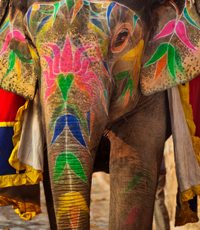
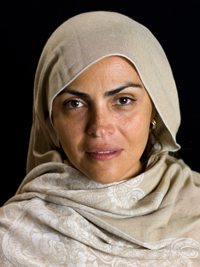
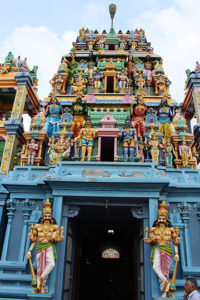
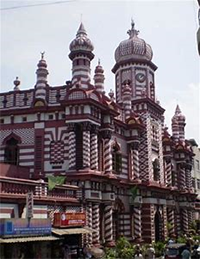

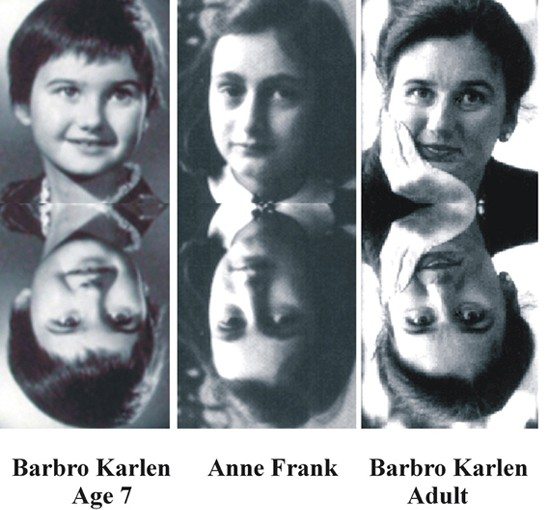
 Article by:
Article by: 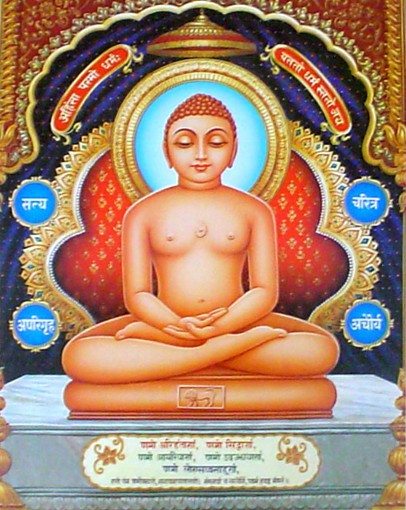
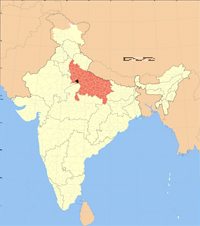
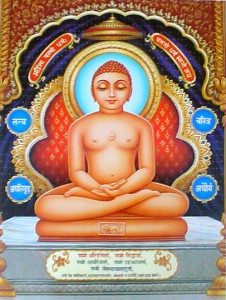
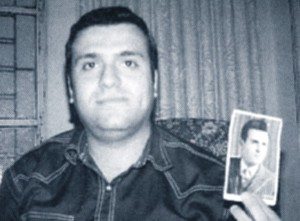


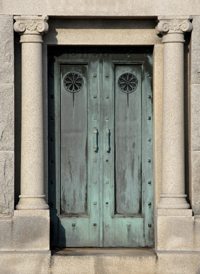
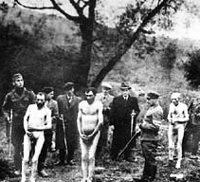

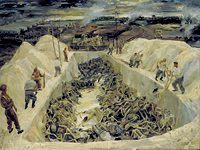
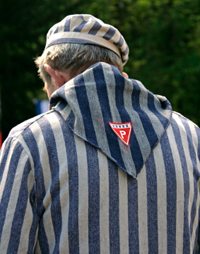

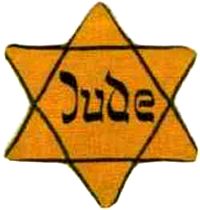
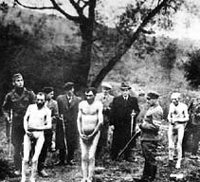
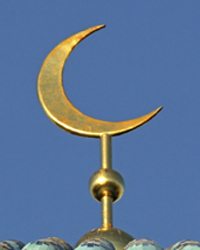


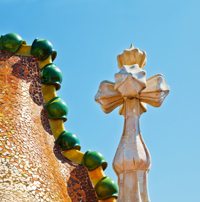
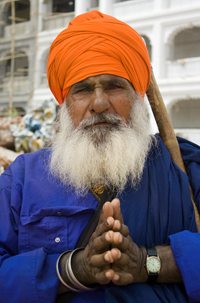


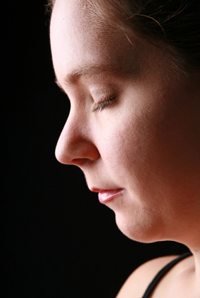 This case involves a physician who practiced medicine in Philadelphia, Pennsylvania, and his wife. As this physician wished to keep his identity private, Ian Stevenson documented the case using pseudonyms for the couple. Stevenson referred to the couple as KE, the physician, and TE, his wife. Since using initials makes it difficult to remember who is who, I will assign them first names for simplicity. KE will be called Ken and his wife, TE, will be referred to as Tania.
This case involves a physician who practiced medicine in Philadelphia, Pennsylvania, and his wife. As this physician wished to keep his identity private, Ian Stevenson documented the case using pseudonyms for the couple. Stevenson referred to the couple as KE, the physician, and TE, his wife. Since using initials makes it difficult to remember who is who, I will assign them first names for simplicity. KE will be called Ken and his wife, TE, will be referred to as Tania.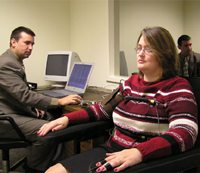 Ian Stevenson, as usual, studied this case in meticulous detail. He had three different Swedish people sign statements confirming that the language Tania was speaking was indeed Swedish. In the statements, it was noted that the accent was that of a natural Swedish speaker.
Ian Stevenson, as usual, studied this case in meticulous detail. He had three different Swedish people sign statements confirming that the language Tania was speaking was indeed Swedish. In the statements, it was noted that the accent was that of a natural Swedish speaker. On the Swedish Coast, Past Life Personality Jenson Jacoby Raises Livestock, Eats Salmon & Hunts Bears
On the Swedish Coast, Past Life Personality Jenson Jacoby Raises Livestock, Eats Salmon & Hunts Bears In one session, Jensen, speaking Swedish, did a comical impersonation of a drunken man at an inn trying to sing. Jenson also showed strong emotion when he was shown a picture of a horse, apparently as it reminded him of home.
In one session, Jensen, speaking Swedish, did a comical impersonation of a drunken man at an inn trying to sing. Jenson also showed strong emotion when he was shown a picture of a horse, apparently as it reminded him of home.